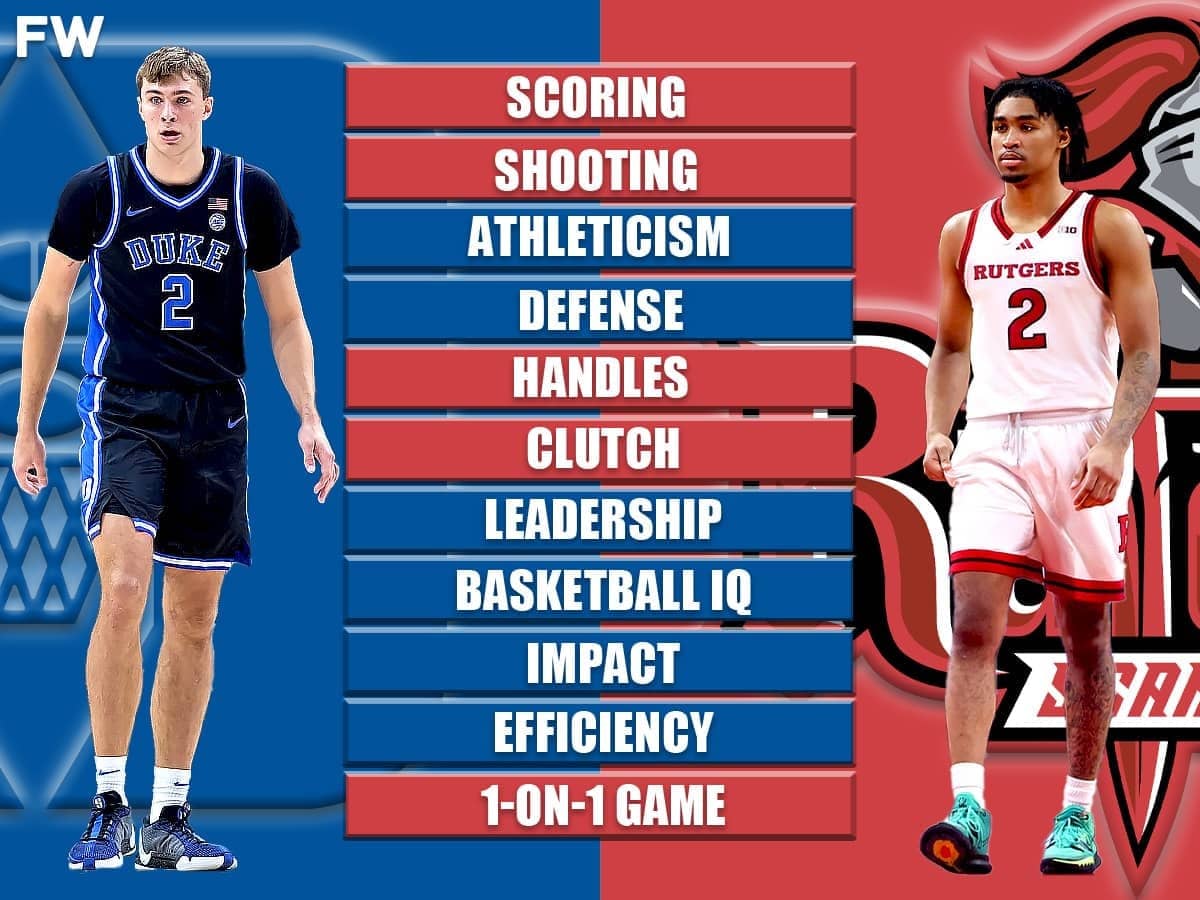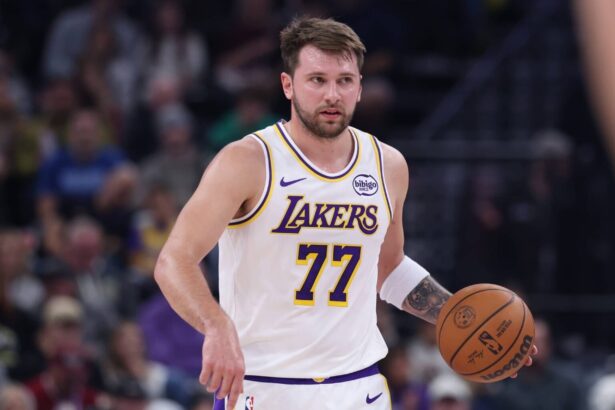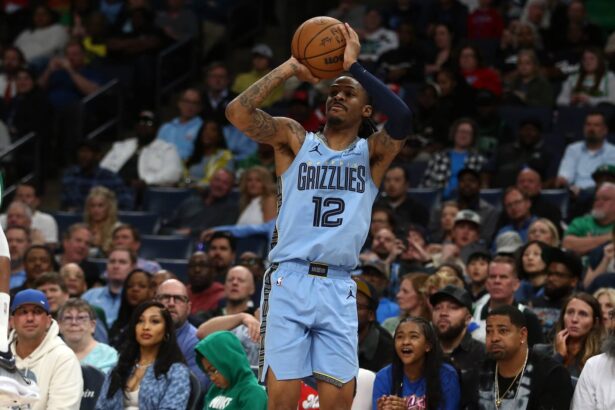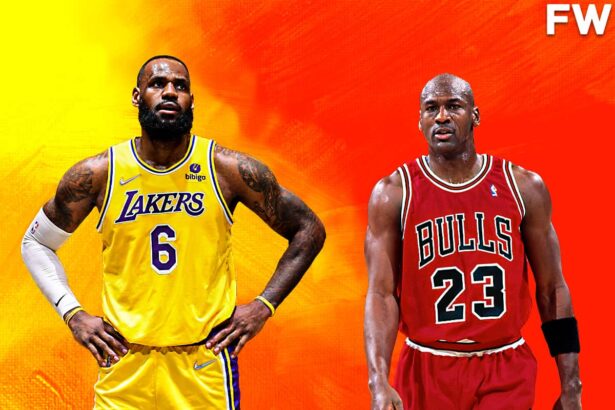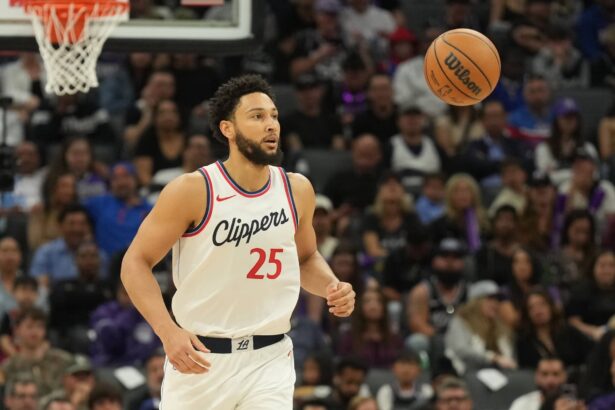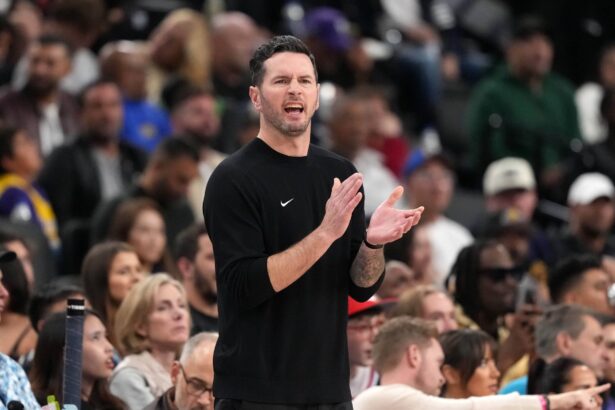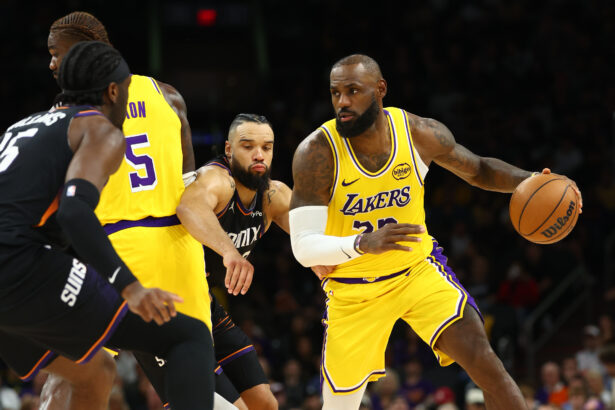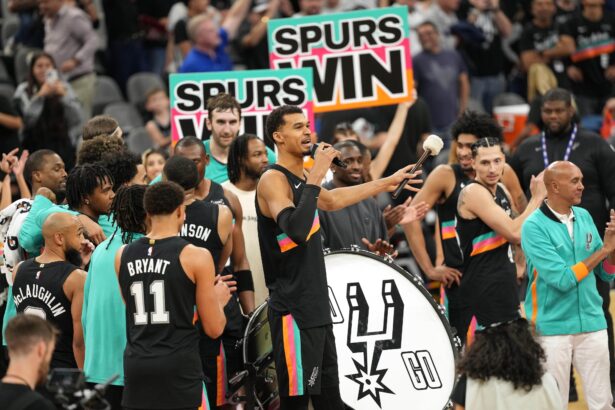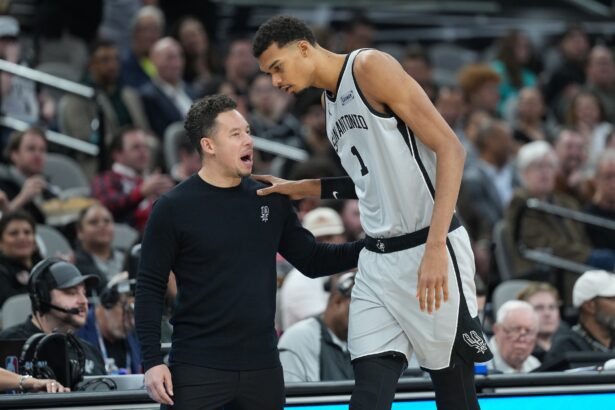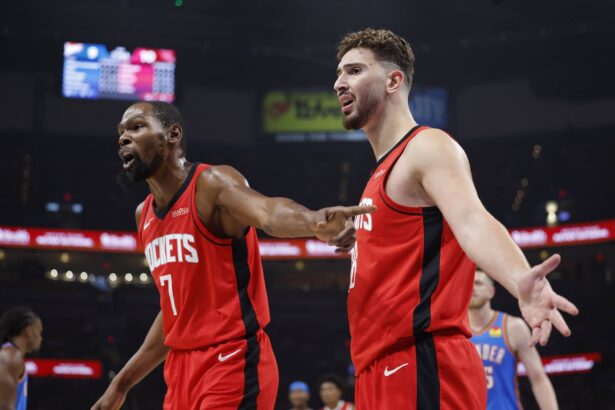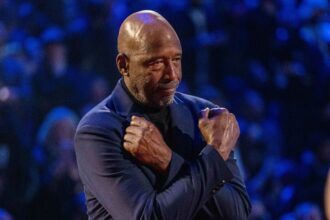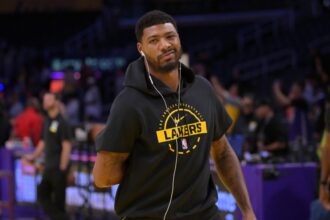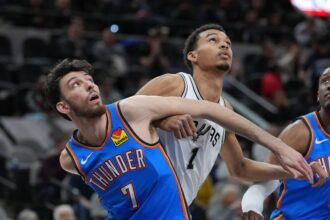As the 2025 NBA Draft approaches, two prospects have emerged as frontrunners: Cooper Flagg and Dylan Harper. Both have demonstrated exceptional talent and versatility, making them prime candidates for the top selections. This article provides an in-depth comparison of their skills across various facets of the game, offering insights into what each player brings to the table.
- Scoring – Dylan Harper
- Shooting – Dylan Harper
- Athleticism – Cooper Flagg
- Defense – Cooper Flagg
- Handles – Dylan Harper
- Clutch – Dylan Harper
- Leadership – Cooper Flagg
- Basketball IQ – Cooper Flagg
- Impact – Cooper Flagg
- Efficiency – Cooper Flagg
- 1-On-1 Game – Dylan Harper
- Final Result
- Cooper Flagg vs. Dylan Harper 6-5
Scoring – Dylan Harper
Cooper Flagg’s scoring ability is defined by his versatility around the basket and in transition as he is posting 15.9 points per game on 42.9% from the field and 72.5% from the free-throw line at Duke. Standing at 6’9”, his combination of size and touch makes him a constant threat inside the paint. Flagg thrives in fast-paced situations where he can exploit mismatches and put pressure on defenses. However, his perimeter scoring still requires improvement for him to fully dominate offensively, particularly against elite defenders who can force him into tough shots.
Dylan Harper, on the other hand, excels as a three-level scorer with an average of 23.5 points per game on 52.0% from the field, 36.4% from three, and 75.9% from the stripe with Rutgers. His offensive game is smooth and polished, making him one of the best pure scorers in this class. Harper has a natural ability to create shots off the dribble, whether pulling up in the mid-range, attacking the rim, or stepping back for a three-pointer. Harper’s versatility gives him the edge, as he can adapt to any defensive scheme and score efficiently in isolation, pick-and-rolls, or catch-and-shoot situations.
Shooting – Dylan Harper
Flagg has made strides in his shooting ability, particularly with his mid-range game and improving three-point shot, although the latter needs work at only 22.2% from deep with Duke. Flagg’s ability to pull up off the dribble or step into jumpers within the flow of the offense gives him a strong foundation. While his perimeter shooting isn’t yet elite, his consistent work ethic suggests it will become a major strength in his game. Right now, his shooting remains reliable in mid-range situations but still inconsistent from deep, especially when heavily contested.
Dylan Harper stands out in the shooting category due to his smooth, refined jump shot. Harper’s form is repeatable and consistent, whether he’s pulling up from mid-range or launching from beyond the arc (36.4%). Harper’s confidence as a shooter under pressure is noticeable, as he doesn’t shy away from taking big shots. This gives him a major advantage over Flagg, as Harper’s perimeter shooting efficiency already translates well to the next level, making him a more reliable threat from outside.
Athleticism – Cooper Flagg
Cooper Flagg’s athleticism is elite and separates him from most prospects in this class. At 6’9”, 205 lbs with impressive length and mobility, Flagg moves fluidly for his size and excels in transition. His explosiveness allows him to finish above the rim, block shots with ease, and recover quickly on defense (1.5 SPG, 1.4 BPG). Whether it’s soaring for putback dunks or rotating on help defense for a chasedown block, Flagg’s athleticism impacts the game on both ends.
While Harper may not have the same level of explosiveness, he compensates with body control and functional athleticism. Harper uses his strength and balance to finish through contact and navigate defenses effectively. He is quick enough to blow by defenders and excels in half-court settings, relying on craft rather than raw athleticism. Overall, however, Harper lacks the elite vertical explosiveness of Flagg at 6’6″ and 215 lbs.
Defense – Cooper Flagg
Flagg is the clear leader when it comes to defense, posting 1.5 steals and 1.4 blocks per game with Duke. His length, athleticism, and defensive instincts make him a game-changer on that end of the floor. Flagg is an elite shot-blocker, often timing his rotations perfectly to swat shots or contest drives. His ability to guard multiple positions adds tremendous value, as he can switch onto wings, bigs, or guards when needed. Beyond the shot-blocking, Flagg also disrupts passing lanes with his active hands and quick reads.
Dylan Harper is a strong and capable defender, particularly on the perimeter (0.9 SPG, 0.5 BPG). He uses his size and strength to guard multiple positions effectively, and his anticipation skills help him generate steals. While he lacks Flagg’s shot-blocking prowess and elite defensive ceiling, Harper still provides reliable defense, especially against opposing guards. His defensive versatility is a valuable asset, but Flagg’s dominance on both the perimeter and interior gives him the clear edge.
Handles – Dylan Harper
Flagg’s ball-handling is impressive for a player of his size. At 6’9”, he can comfortably put the ball on the floor to create opportunities for himself or others (3.6 APG). Flagg’s handles allow him to operate in isolation, attack closeouts, and navigate through traffic in transition. However, his handle is still developing against elite defenders, as smaller, quicker players can sometimes pressure him into turnovers.
Harper’s ball-handling skills are a significant strength and a key part of his game. He possesses a tight, controlled dribble that allows him to create space and break down defenses with ease. Harper’s ability to use crossovers, hesitations, and spin moves makes him dangerous in one-on-one situations. His ball-handling gives him a major edge over Flagg, as he can consistently control the tempo of the game and dictate offensive possessions. He is also posting 4.4 assists per game so far with Rutgers despite handling a heavy scoring load.
Clutch – Dylan Harper
Flagg has shown a willingness to step up in big moments, particularly on the defensive end. His ability to block shots, grab crucial rebounds, or make key stops makes him a major asset in crunch time. Offensively, Flagg is capable of hitting timely shots and finishing through contact when needed. However, his clutch scoring ability is still developing, particularly in creating shots against set defenses. While Flagg’s impact in clutch moments is undeniable, it’s more defensive-driven than offensive.
Harper shines brightest in clutch situations due to his scoring ability and confidence. He thrives when the pressure is highest, often taking—and making—big shots for his team. His ability to create his own shot and finish at all three levels gives him the edge in clutch situations. Harper’s offensive versatility and poise make him the go-to player in tight games.
Leadership – Cooper Flagg
Flagg leads by example with his relentless energy, defensive intensity, and team-first mentality. His presence on the court elevates those around him, as he sets the tone with hustle plays, key stops, and vocal communication on defense. Even at a young age, he exudes poise and confidence, ensuring that his team stays locked in and focused. His natural competitiveness is contagious, and teammates feed off his determination to win.
Harper’s leadership style is more geared toward the offensive end, where he shines as a confident scorer and playmaker. He often takes charge during critical moments, putting his team on his back with timely buckets and smart decisions. While Harper’s offensive leadership is undeniable, his vocal and defensive leadership aren’t as pronounced as Flagg’s. Flagg’s two-way impact and constant communication give him the slight edge in this category.
Basketball IQ – Cooper Flagg
Flagg’s basketball IQ is one of his greatest assets. His ability to read the game on both ends is exceptional, as he constantly positions himself in the right spot to make winning plays. Defensively, he anticipates rotations, blocks shots without fouling, and disrupts passing lanes with his awareness. Offensively, Flagg’s decision-making is sharp, as he rarely forces bad shots and understands when to attack, pass, or slow the game down.
Harper also boasts a strong basketball IQ, particularly on offense. His understanding of spacing, angles, and defensive schemes allows him to break down opponents with ease. Harper reads defenses well, adjusting his approach depending on the situation—whether it’s attacking the rim, pulling up, or facilitating for teammates. While Harper’s offensive IQ stands out, Flagg’s ability to impact both ends of the court with his decision-making gives him the edge in overall basketball intelligence.
Impact – Cooper Flagg
Cooper Flagg’s impact on the game is undeniable due to his two-way dominance. Whether it’s blocking shots, grabbing rebounds, or scoring efficiently, Flagg influences every possession. His defensive versatility allows him to guard multiple positions, altering opponents’ game plans. On offense, Flagg’s ability to finish in transition, hit timely shots, and keep the ball moving makes him invaluable.
Dylan Harper’s impact comes primarily from his offensive prowess. He has the ability to take over games as a scorer and playmaker, keeping defenses on their heels with his skill and composure. Harper’s shot creation and ability to control the pace of the game ensure that his team’s offense runs smoothly. While his defense and rebounding are solid, they don’t reach the game-changing level of Flagg’s contributions.
Efficiency – Cooper Flagg
Flagg’s efficiency stands out due to his shot selection and ability to convert high-percentage opportunities. He thrives in the paint, where his size and touch allow him to finish at an elite rate. Flagg’s all-around efficiency—both offensively and defensively—makes him one of the most reliable performers in this class.
Dylan Harper is an efficient scorer, particularly for a guard who operates heavily with the ball in his hands. However, as a higher-usage player, Harper occasionally takes contested shots that can lower his efficiency. Flagg’s shot selection and defensive consistency give him the edge in this category.
1-On-1 Game – Dylan Harper
Flagg’s one-on-one game is strong, especially for a forward with his size and mobility. He uses his athleticism, footwork, and improving handle to attack mismatches, finishing through contact or pulling up for short jumpers. However, Flagg’s one-on-one game is not yet elite, as he occasionally struggles against quicker, more disciplined defenders who force him into tough shots.
Dylan Harper thrives in one-on-one situations, making this a clear strength of his game. His ball-handling, change of pace, and shot-creation ability allow him to consistently break down defenders and create his own shot. His ability to win individual matchups is a major part of his offensive identity, giving him the clear edge over Flagg in this category.
Final Result
Cooper Flagg vs. Dylan Harper 6-5
The battle between Cooper Flagg and Dylan Harper as the top prospects for the 2025 NBA Draft is as close as it gets, with Flagg edging out Harper 6-5 in this detailed breakdown. Flagg’s dominance on both ends of the floor, highlighted by his athleticism, defensive prowess, and impact, showcases why he’s considered a generational two-way talent. His ability to elevate his teammates with leadership and his growing offensive game make him a uniquely versatile player who can anchor a team’s success at the highest levels of basketball.
Meanwhile, Harper’s offensive brilliance and scoring versatility establish him as a premier shot-creator and clutch performer. His one-on-one ability and polished skillset make him the type of player who can take over games in pivotal moments, embodying the modern NBA guard’s dynamic role. Though Flagg narrowly wins this comparison with his all-around game and two-way contributions, Harper’s offensive firepower ensures that this debate will remain compelling well into their professional careers.
Thank you for being a valued reader of Fadeaway World. If you liked this article, please consider following us on Google News. We really appreciate your support.

